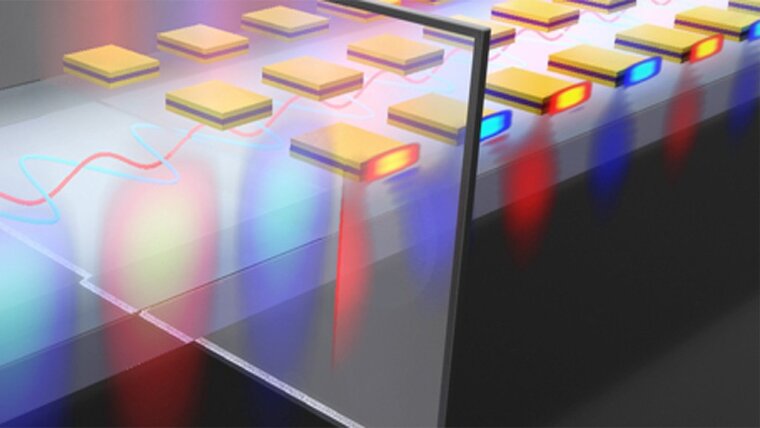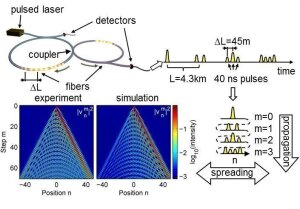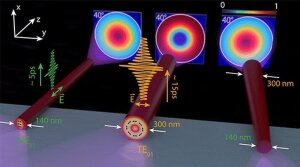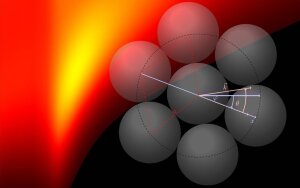
Research focus
Quantum Random Walks
Image: Ulf Peschel1. Quantum random walks in discrete fiber networks
Random walks are widely used in many areas of natural sciences to model the classical diffusion of incoherent particles. However, spreading of coherent light or the motion of quantum particles requires an implementation where wave interference is enabled resulting in a completely different and much richer dynamics. In our group we study booth theoretically and experimentally the random walk of coherent light pulses in an extended fiber network. We use a time-multiplexed setup of two coupled fiber loops, where a length difference ΔL enables a transverse spreading of pulses in time. If a light pulse travels in the short loop, it makes a shortcut and thus advances temporally.
Modellierung von Halbleiter-Nanowire-Lasern
Image: Ulf Peschel2. Modeling semiconductor nanowire lasers
Semiconductor nanowires can be grown easily and with high optical quality. As they form tiny resonators where photons are strongly coupled with the direct transition of the semiconductor material they are ideal candidates to form micro-optical circuit elements and nanolasers. As they are coherent nano-light sources they form perfect links between electronic and photonic integrated circuits.
Dynamik des Lichts
Image: Ulf Peschel3. Nonlinear dynamics of polaritons
The group has a strong history with manifold contributions to the fascinating physics of nonlinear optics in artificial photonic structures such as, for instance, coupled waveguides, nonlinear microresonators and photonic crystals. This research is primarily devoted to systematic control and modification of light by its linear and nonlinear interaction with matter. In particular we study the influence of artificially modified dispersion and diffraction properties of light on fundamental phenomena of nonlinear dynamics. Among these are optical bistability, modulational instability, parametric interactions and formation of robust self-localized states also known as solitary waves. A general aim of this research is the development of compact on-chip all-optical devices for novel light sources, signal processing and high-resolution imaging.
Optische Eigenschaften hybrider Nanostrukturen
Image: Ulf Peschel4. Optical properties of hybrid nanostructures
The junior research group investigates nanostructured devices for spectroscopy, microscopy, photovoltaics and catalysis. The fundamental optical response of plasmonic and dielectric systems is considered from a classical electromagnetic perspective, including properties of amorphous materials, rough interfaces, nonlinear and semi-classical interactions. The aim is to realistically describe complex nanoparticle distributions and ultrathin multilayers with reliable and rapid methods of computational nanophotonics while extending its scope towards multiphysics aspects.



